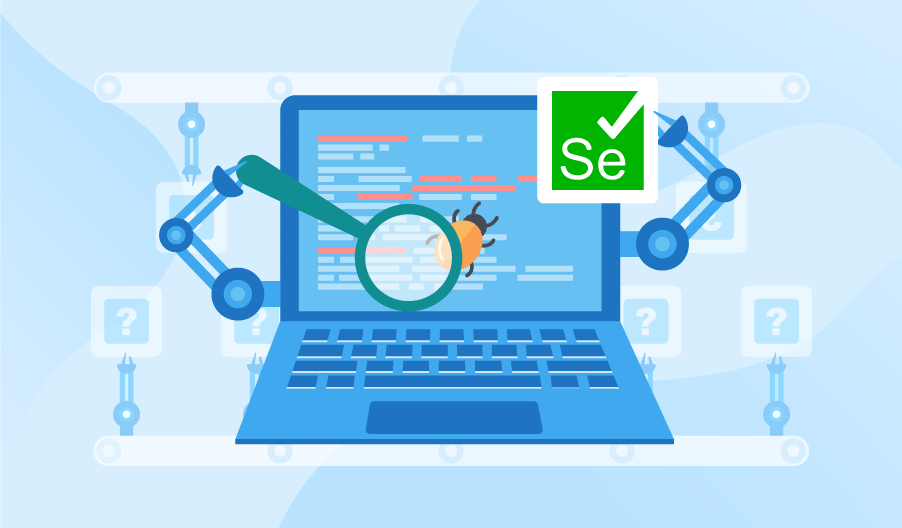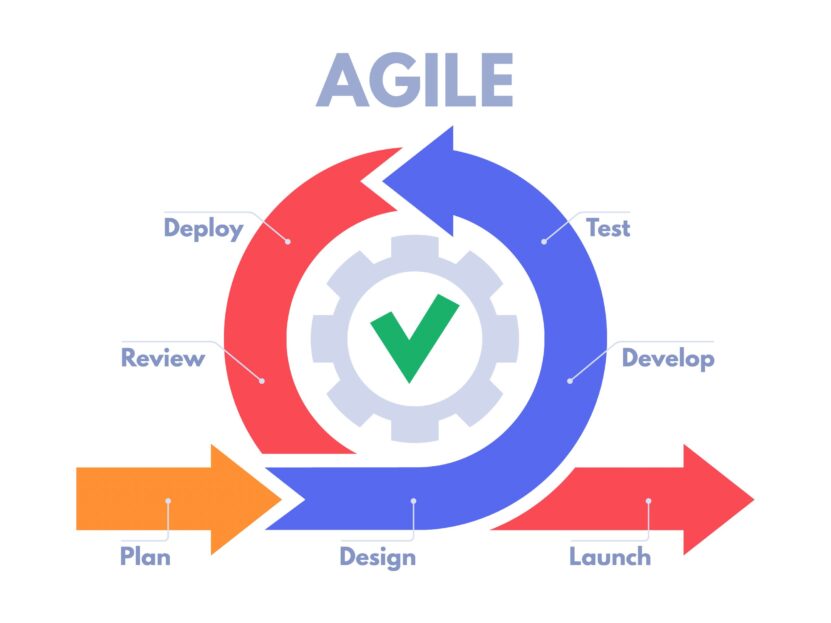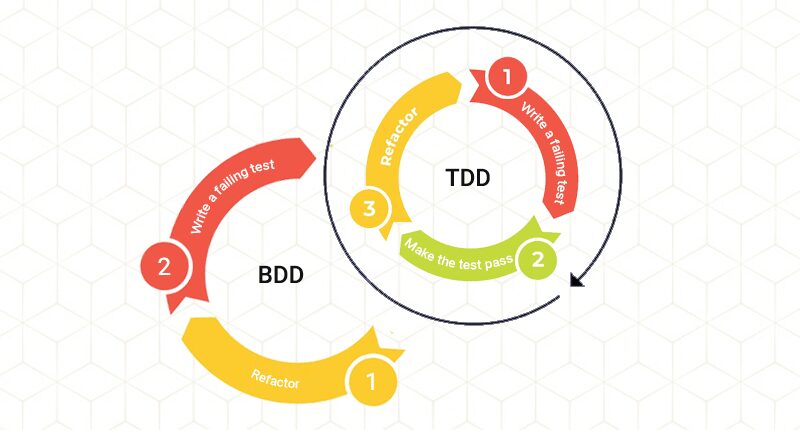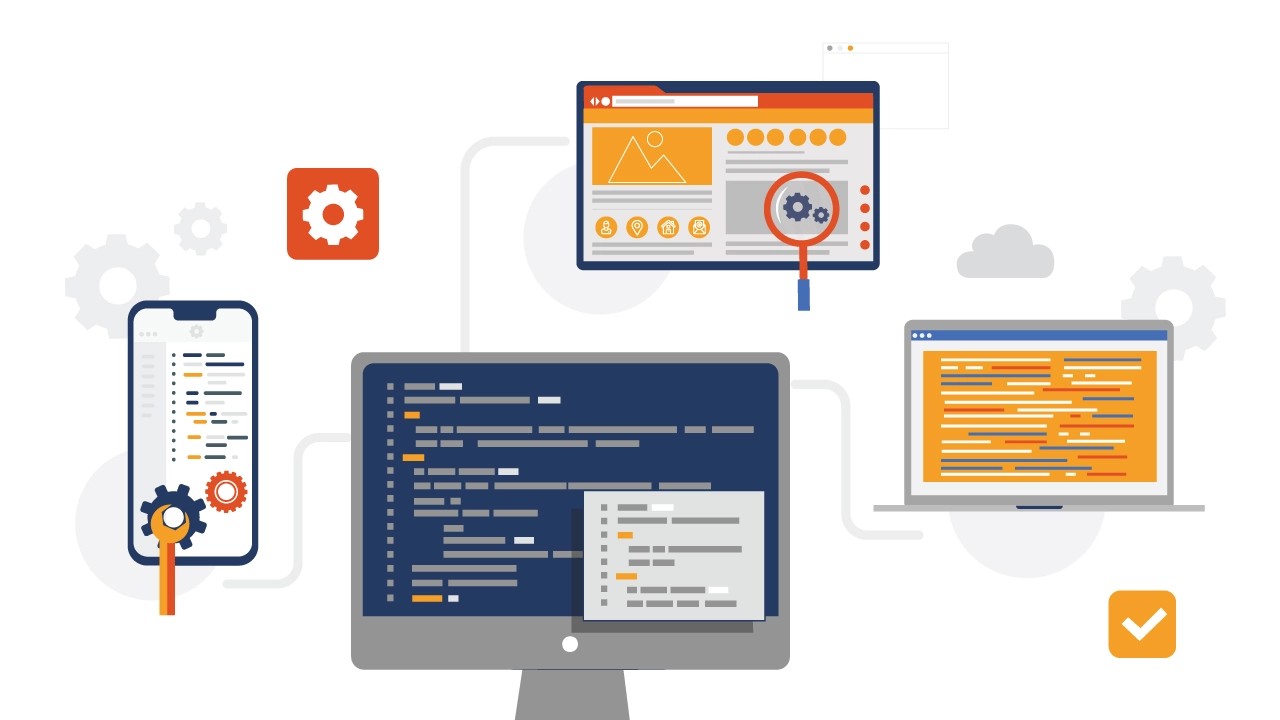In today’s fast-paced application development landscape, the top priority for developers and testers is finding and fixing bugs in the code before they cause problems for users; as well as ensuring that the applications are of high quality and performing seamlessly across various browsers and operating systems.
To achieve this testing needs to be faster than development. And faster testing means demand for strong, scalable, and flexible testing solutions. Among different testing approaches Selenium testing is the most popular approach.
However, the growing demand for faster and more robust digital experiences has also led developers to realize the importance of adopting agile application development practices. As a result, agile application testing has become crucial for modern application development.
Selenium is the most widely used agile automation framework for automating web application testing. It enhances agile effectiveness and accelerates the delivery of high-quality applications. One critical component that extensively contributes to the success of agile methodologies is Selenium integration. With this integration, developers can deliver high-quality applications efficiently.
In this article, we will discuss Selenium testing in agile environments and its advanced strategies for success. But before we discuss that let’s first understand what Selenium testing is and its role in the Agile environment.
Selenium

Selenium is a popular open-source web automation testing framework developed by Jason Huggins in 2004. It enables testers to write automated test scripts in various programming languages including Java, C#, Python, Ruby, and PHP, and run them on different browsers like Internet Explorer, Mozilla Firefox, Google Chrome, and Safari and operating systems.
It uses a single interference to perform actions on web elements, validate expected outcomes, and verify web applications’ consistent functionality across different browsers and platforms.
Selenium is the most preferred choice among developers to automate browser-based applications as desktop-based applications are not supported. The Selenium framework is designed in a way that it can be merged with other tools and frameworks like TestNG, JUnit, Cucumber, etc. Using Selenium developers can easily build keyword-driven frameworks, and also simulate real user interaction with the application using automated test cases.
Components of Selenium
Selenium is an open-source automated testing framework that offers a suite of tools tailored to fulfill various web automation testing needs. Selenium has three different components. They are
Selenium WebDriver- WebDriver is the core component of Selenium. With a single API, it allows one to interact with web elements and control web browsers. It automates interactions on web pages, like clicking buttons, filling up forms, and navigating different pages.
Selenium IDE- Selenium Integrated Development Environment is a Firefox browser extension that supports editing, recording, and debugging features. using its user-friendly interface even beginners can create simple test scripts in a record-and-playback manner.
Selenium Grid- Selenium Grid allows distributing multiple tests across multiple machines, operating systems, and browsers simultaneously for test execution. This accelerates the execution process especially when there are a vast number of tests.
What is agile methodology?

Before agile principles, the conventional application development process followed the Waterfall Model. Where application development was done linearly. Developers work in phases, and after completing each step they go to another. If bugs show up in one phase then the tester has to return to the code of the previous phase, go over every line, and try to find the errors.
The whole process needs to be repeated even when there is a slightest change in requirements. As a result, testers always end with more coding and more testing. This process was overly complex, tedious, and time-consuming.
The emergence of agile development came as a better alternative, which makes the development process of applications more flexible. The Agile principle focuses on releasing working applications. When a user’s requirement deviates, the Agile development methodology accommodates the changes and implements them efficiently.
Agile helps to improve the speed, accuracy, and efficiency of the testing process.
In this methodology developers and testers ensure that any changes and improvisations concerning the original model are successfully taken care of and pushed to production in one go, instead of the whole application.
Advantages of Selenium in an Agile environment
Selenium plays an important role in the application development and testing ecosystem. It offers a wide array of benefits that perfectly align with the principles and goals of agile methodologies and significantly contribute to the success of the application. Below are some advantages of using Selenium in an agile environment.
Faster and continuous feedback
Selenium’s test automation capabilities enable rapid and repeatable testing, providing prompt feedback on code changes. In Agile, quick feedback is crucial for iterative development, and Selenium test automation capabilities help to achieve this by enabling rapid and repeatable testing, and providing prompt feedback on code changes.
Cross-browser and cross-platform testing

Selenium’s support for multiple browsers such as Chrome, Firefox, Safari, etc, and various operating systems like Windows, macOS, and Linux, enables test teams to verify web application compatibility across multiple environments, so that applications behave consistently across different platforms, providing a seamless user experience
This is a very important aspect of Agile development, which demands frequent releases at a high level of compatibility testing.
Integration with CI/CD Pipelines
Selenium can be seamlessly integrated with popular CI/CD tools like Jenkins, GitLab CI, and TeamCity. This integration enables developers to ensure that each code change is thoroughly tested before deployment which is an integral part of the agile delivery pipeline. It enhances the overall development process and application quality by providing early feedback on code changes and reducing the risk of defects in production.
Speed and efficiency
Selenium’s ability to run tests in parallel across multiple machines, browsers, and platforms helps reduce test execution time, allowing teams to receive quick feedback on their code changes. This scalability fosters faster release cycles in Agile where multiple tests need to be executed rapidly.
Cost and time savings
Selenium automated testing reduces the overall testing effort and cost associated with manual testing, saving time and resources in the long run.
Reusability
Selenium allows the creation of reusable test scripts. This reusability ensures that test scripts can be leveraged across different stages of the development lifecycle, thereby optimizing test coverage and minimizing maintenance efforts and costs.
TDD and BDD support

Selenium facilitates Test-Driven Development and Behavior-Driven Development practices, to encourage testing early in the development process, and collaboration between developers, and testers. Integrating Selenium with an agile environment helps teams to catch defects early in the lifecycle and ensure that the code meets the specified requirements.
Implementing Selenium testing in an agile environment
In today’s world of technology, the words Agile and Automation go hand in hand due to the advantages they provide. Agile development is an incremental approach to development and testing. In the Agile environment, the application’s features are tested as they are developed. The core objective of using agile methodology is rapid iterations and continuous delivery, making robust testing frameworks like Selenium necessary.
Selenium is the most widely used agile automation framework for automating web application testing. It enhances agile effectiveness and accelerates the delivery of high-quality applications.
As developers embrace Selenium test automation in an agile environment, the effectiveness of agile gets enhanced, and the overall productivity and deployment of application development activities accelerate to deliver high-quality.
Using Selenium in Agile allows QAs to create test cases in alignment with the nature and need of the application at hand. After the test case creation, they are executed automatically on each piece of code added to the existing application. The tests verify that the code is completely bug-free and that newly created code does not interfere with or impede the existing features. As a result with Selenium agile implementations developers get a fully functional, bug-free, and flawless application at the end.
However, integrating Selenium with an Agile environment to get a fully functional, bug-free, and flawless application, and achieve optimal results requires advanced strategies.
Developing an advanced strategy for effective and successful Selenium testing in an agile environment
Right testing framework
A testing framework is a set of libraries, tools, and a guideline that helps in writing, organizing, and executing the test cases. TestNG, JUnit, PyTest, and Cucumber are a few Selenium testing frameworks. Therefore for integrating Selenium with an Agile environment choosing the right testing framework that suits the needs and preferences is important.
Each of the testing frameworks poses cons and pros, so before choosing the one compare their features based on factors such as ease of use, documentation, compatibility, reporting, and community support.
Conduct parallel testing

Since the agile methodology aims at continuous delivery, parallel testing is the right option in this approach. Selenium enables parallel test execution across multiple machines, browsers, and platforms simultaneously, making it easier to handle large-scale testing.
This scalability is beneficial in an agile environment where test cases increase as the application grows. Thus saving a huge amount of time, and also enhancing the productivity and the quality of the test
Automate the testing process and environment
To integrate Selenium with Agile projects automate the testing process and environment as much as possible. Automation saves time, reduces error, and increases test efficiency. Tools like Maven and Gradle can be used to automate the build and dependency management.
Jenkins, Bamboo, or Travis CI tools can also be used to automate the continuous integration and delivery. Tools like Docker, and Kubernetes, help testers automate the testing environment and configuration. Additionally, tools like Selenium Grid can help in automating cross-browser and cross-platform testing. All these tools are important in agile development due to frequent releases and changing user requirements.
Align the testing strategy with agile principles

To integrate Selenium with Agile it is important to align the testing strategy with the agile principles and values. This means adopting a test-driven development or a behavior-driven development approach, which allows writing the test cases before or all along with the code.
Implementing this strategy ensures that the code meets the requirements and expectations of the users. Also follow the agile testing quadrant that categorizes the tests into four types: unit, integration, system, and acceptance testing. Each has a different purpose, scope, and level of automation.
Collaborate with the test team and stakeholders
Strong collaboration among team members is important for resolving issues swiftly and efficiently. Therefore to integrate Selenium with Agile projects collaboration between team and stakeholders throughout the testing process is crucial.
Better team collaboration is essential for Agile because it allows sharing feedback, learning from each other, and improving the quality and performance of the overall testing process.
Tools like Slack, Skype, or Zoom can help in communicating with the team and stakeholders. The test team can also use tools such as Allure, Extent, or ReportNG to generate and share test reports and results.
Adopt DevOps

DevOps helps to build, test, and release quality applications at faster speeds along with focusing on good communication and using automation. For Agile, automation helps reduce human time and resources so the team can give more time to research testing. DevOps also helps in ensuring proper communication and collaboration among developers and operation teams.
Adapt to changes and challenges
An important aspect of integrating Selenium with an Agile environment is to adapt to changes and challenges that may arise during the testing process. An agile environment is dynamic and unpredictable, so testers need to be flexible and responsive to changing requirements, feedback, and issues.
Learn and improve continuously
The agile environment is iterative and incremental, so to integrate Selenium with an Agile environment it is important for testers to continuously learn and improve from their testing experience and outcomes. They must review and refine their testing process and environment regularly and systematically.
Conclusion
In conclusion, Selenium is a popular tool for automating web application testing, especially in agile environments that require frequent and fast feedback loops. Selenium’s integration with agile methodologies significantly enhances the application development process.
For attaining successful Selenium testing in an agile environment, it is important to implement the above-mentioned strategies, covering the testing framework for automation, ensuring faster feedback, and providing compatibility across different environments, along with ensuring proper collaboration among QA and the development teams.
